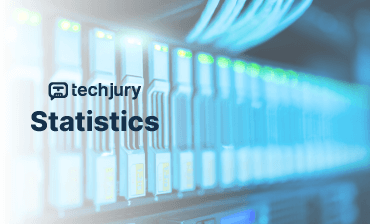Imagine standing at the precipice of a technological revolution where traditional boundaries of computing dissolve, and innovation flows as freely as data through global networks. Cloud computing isn‘t just a technological trend—it‘s the fundamental redesign of how humanity stores, processes, and interacts with information.
The Evolutionary Journey of Cloud Technologies
The story of cloud computing reads like an epic of human ingenuity. What began as a conceptual framework in the early 2000s has metamorphosed into a global infrastructure that touches nearly every aspect of modern life. From small startups to multinational corporations, cloud technologies have democratized computational power, making sophisticated technological capabilities accessible to organizations of all sizes.
Historical Context: From Concept to Global Infrastructure
In the early days, cloud computing was viewed with skepticism. Traditional IT departments saw it as a potential threat to established infrastructure models. However, visionary technologists recognized its transformative potential. Companies like Amazon Web Services (AWS) pioneered commercial cloud services, demonstrating that remote, scalable computing could be more efficient and cost-effective than traditional on-premise solutions.
Market Dynamics: A Quantitative Perspective
The global cloud computing market represents a testament to technological evolution. Projections indicate the market will reach an astounding [1.614 trillion] by 2030, representing a compound annual growth rate of 16.3%. This isn‘t merely statistical growth—it‘s a fundamental restructuring of global technological infrastructure.
Regional Technological Landscapes
Different global regions showcase unique cloud adoption characteristics:
North America continues to lead technological innovation, with the highest cloud adoption rates and most significant infrastructure investments. The United States remains the primary incubator of cloud technologies, with companies like AWS, Microsoft Azure, and Google Cloud driving global standards.
European markets demonstrate a more regulated approach, emphasizing data privacy and compliance. The European Union‘s stringent data protection frameworks have influenced global cloud service development, prioritizing user privacy and security.
Asian markets, particularly in countries like China, Japan, and India, are experiencing exponential growth. These regions are not just adopting cloud technologies but actively developing indigenous cloud infrastructure, creating a more multipolar technological ecosystem.
Technological Evolution: Beyond Simple Storage
Cloud computing has transcended its initial perception as mere remote storage. Modern cloud infrastructures represent complex, intelligent ecosystems that integrate artificial intelligence, machine learning, and advanced computational capabilities.
Key Technological Trends
Multi-Cloud and Hybrid Architectures
Organizations are moving beyond single-vendor dependencies. Multi-cloud strategies allow businesses to leverage the strengths of different cloud providers, creating more resilient and flexible technological infrastructures.Edge Computing Integration
The convergence of cloud and edge computing represents the next frontier. By processing data closer to its source, organizations can reduce latency, enhance security, and create more responsive technological systems.Serverless Computing
Serverless architectures are revolutionizing how developers think about computational resources. By abstracting infrastructure management, developers can focus purely on code and functionality.
Economic and Workforce Implications
Cloud technologies are not just changing technological landscapes—they‘re reshaping economic structures and workforce dynamics. The median cloud professional salary in the United States now stands at [118,449], reflecting the critical importance of these skills.
Skill Evolution and Professional Development
The cloud computing ecosystem demands continuous learning. Professionals must develop skills that transcend traditional IT boundaries, combining technical expertise with strategic thinking, security awareness, and adaptability.
Security and Compliance: The Critical Frontier
As cloud technologies become more sophisticated, security becomes paramount. Modern cloud infrastructures integrate advanced security methodologies:
- Zero-trust security architectures
- Advanced encryption techniques
- Continuous compliance monitoring
- AI-powered threat detection systems
These approaches represent a paradigm shift from traditional perimeter-based security models to more dynamic, intelligent protection strategies.
For investors and business leaders, cloud computing represents more than a technological trend—it‘s a strategic imperative. Public cloud services are projected to reach [597.3 billion] in 2023, indicating massive market potential.
Strategic Investment Considerations
- Diversified cloud infrastructure investments
- Focus on companies with robust multi-cloud strategies
- Prioritize organizations demonstrating technological innovation
- Consider emerging markets with high technological adoption rates
Challenges and Future Outlook
Despite its remarkable progress, cloud computing faces significant challenges:
- Increasing cybersecurity complexities
- Global regulatory variations
- Skill gap in advanced technologies
- Environmental sustainability concerns
However, these challenges also represent opportunities for innovation and strategic differentiation.
Conclusion: The Continuous Digital Transformation
Cloud computing is more than a technological infrastructure—it‘s a fundamental reimagining of how humanity stores, processes, and interacts with information. As we progress through 2024 and beyond, organizations that strategically leverage cloud technologies will define the next era of digital innovation.
The future belongs to those who can effectively harness distributed, flexible, and intelligent technological ecosystems.
About the Author
As a technology expert and data analysis specialist, I‘ve witnessed the remarkable evolution of cloud computing. This exploration represents not just a technological analysis, but a passionate narrative of human innovation and potential.
